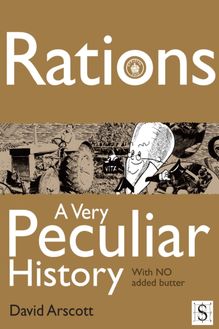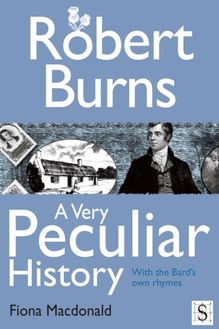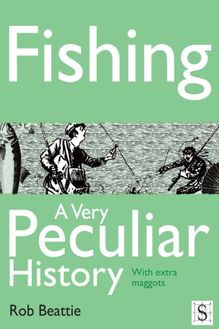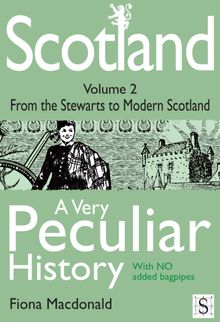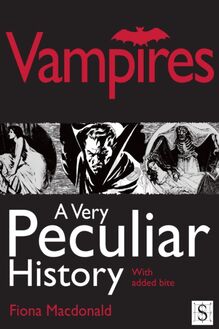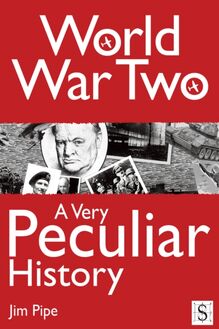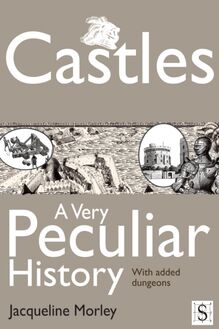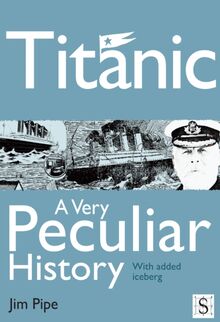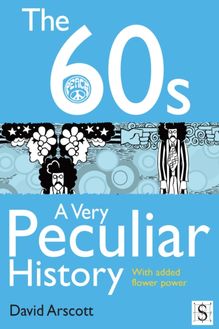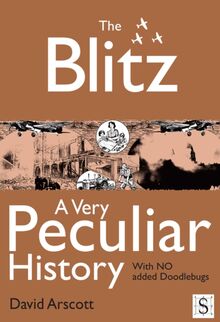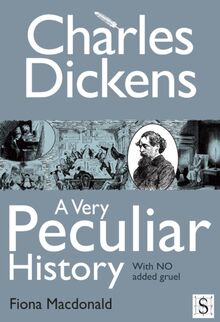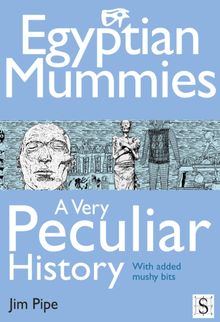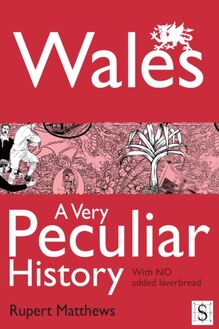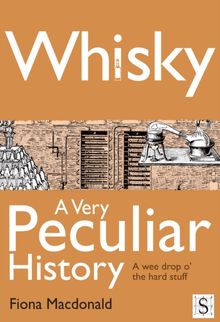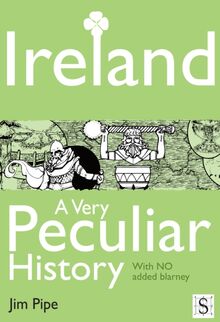London, A Very Peculiar History , livre ebook
67
pages
English
Ebooks
2012
Vous pourrez modifier la taille du texte de cet ouvrage
Obtenez un accès à la bibliothèque pour le consulter en ligne En savoir plus
Découvre YouScribe en t'inscrivant gratuitement
Découvre YouScribe en t'inscrivant gratuitement
67
pages
English
Ebooks
2012
Vous pourrez modifier la taille du texte de cet ouvrage
Obtenez un accès à la bibliothèque pour le consulter en ligne En savoir plus
Publié par
Date de parution
17 janvier 2012
Nombre de lectures
1
EAN13
9781908759122
Langue
English
Publié par
Date de parution
17 janvier 2012
Nombre de lectures
1
EAN13
9781908759122
Langue
English
Title Page
LONDON, A VERY PECULIAR HISTORY
With added jellied eels
Written by
Jim Pipe
Created and designed by David Salariya
Publisher Information
First published in Great Britain in MMXII by Book House, an imprint of
The Salariya Book Company Ltd
25 Marlborough Place, Brighton BN1 1UB
www.salariya.com
www.book-house.co.uk
Digital edition converted and distributed in 2012 by
Andrews UK Limited
www.andrewsuk.com
Editor: Jamie Pitman
Assistant editor: Jodie Leyman
© The Salariya Book Company Ltd MMXII
All rights reserved. No part of this publication may be reproduced, stored in or introduced into a retrieval system or transmitted in any form, or by any means (electronic, mechanical, photocopying, recording or otherwise) without the written permission of the publisher. Any person who does any unauthorised act in relation to this publication may be liable to criminal prosecution and civil claims for damages.
Every effort has been made to trace copyright holders. The Salariya Book Company apologises for any omissions and would be pleased, in such cases, to add an acknowledgement in future editions.
Visit our website at
www.book-house.co.uk
or go to
www.salariya.com
for free electronic versions of:
You Wouldn’t Want to be an Egyptian Mummy!
You Wouldn’t Want to be a Roman Gladiator!
You Wouldnt Want to Join Shackleton’s Polar Expedition!
You Wouldn’t Want to Sail on a 19th-Century Whaling Ship!
WARNING: The Salariya Book Company accepts no responsibility for the historical recipes in this book. They are included only for their historical interest and may not be suitable for modern use.
Dedication
To the joys of London: Club Tone, one pound to Balham, and missing the last night bus…
JP
Quotes
‘When a man is tired of London, he is tired of life; for there is in London all that life can afford.’
Dr Samuel Johnson (1709–1784)
‘That great foul city of London – rattling, growling, smoking, stinking – ghastly heap of fermenting brickwork, pouring out poison at every pore...’
John Ruskin (1819–1900)
‘The streets of London, to be beheld at the very height of their glory, should be seen on a dark dull murky winter’s night.’
Charles Dickens, Sketches by Boz (1836)
‘London has the effect of making one feel historic.’
V. S. Pritchett (1900–1997)
Introduction: What Makes London Special?
London – big, isn’t it? It’s been that way for centuries: in the time of Queen Elizabeth I (1558–1603) the capital was 13 times larger than the second-biggest city in England, while even in the 1930s, one in five people in England and Wales lived in London.
To some, it’s a monster that gobbles up everyone and everything: the crowds, the smells and the roar of traffic can overwhelm you. Yet London’s size gives it energy – you only have to watch the mad dash of commuters during rush hour to feel the manic pulse of the city. That’s partly because London has been re-energised again and again by waves of migrants, turning it into the great melting-pot it is today. Many of those who come are young, and though London is old, it is also a city of youth. Blink, and life will pass you by.
To others, the sprawling city is a glorious mess. London doesn’t have the straight roads and neat numbered grid of New York or Chicago. That’s because it spread out over hundreds of years, merging with scores of distinct villages as it grew, and gluing them together with bustling city streets. It’s no surprise that London has not one but two centres – the City of London for trade and the City of Westminster for politics.
London sits right on top of an ancient Roman town, and every time a gleaming tower of glass and steel is built, part of the city’s ancient heritage is revealed. The city is built up in heaps, with layers of history both cheek-by-jowl and buried under one another. It has been said that no stone ever leaves London – it just gets reused, adding to the pile already there. As a result, much of its story is hidden, or at least not obvious at first glance.
Looking across the city from Parliament Hill (NW3), it’s very hard to imagine Boudicca battling the Romans, the Saxon port of Ludenwic, or the lost rivers and streams that are now buried deep beneath the streets. All this buried history means our knowledge of the ‘Big Smoke’ is sometimes little more than a patchwork of loosely connected legends. Truth and lies mingle – but which is which?
The city’s long and troubled past also means it’s a bit like an old dog: lovable but rather scruffy, and more than a tad worn out. London has always been noisy, dirty and overcrowded. Though every once in a while a great fire or other disaster has reduced the city to ashes, somehow the mess and the chaos have always returned. If you think it’s bad now, be thankful you avoided the Great Stink of 1858, when the whole city reeked like a giant toilet, or the ‘pea-soupers’ of the 1920s and 30s when the capital was wrapped in a thick, choking blanket of sooty fog.
When trains get cancelled, or you’re stuck for what seems like an eternity in a dark Tube tunnel, don’t be too harsh on the old place. Just ask: the city’s inhabitants pride themselves on finding alternative routes under and over the city’s twisting and turning streets. In fact, Londoners are nothing if not proud: it’s not by chance that the popular name for them – Cockneys – began as an insult meaning ‘cocky’ or ‘boastful’. Londoners are defiant, too, whether braving German bombs during the Blitz or taking to the streets in protest. Disorder and anarchy are as much a part of the capital’s history as its beautiful squares and great monuments.
Curious place names
•Bleeding Heart Yard, Hatton Garden, EC1. In popular legend, the Hatton family made a pact with the Devil in order to achieve fame and fortune during the reign of Queen Elizabeth I. When the Devil came to claim his fee, he grabbed Lady Elizabeth Hatton’s body and ripped her limb from limb, leaving only a bloody, still-beating heart!
•Soho Square , W1. Before the Great Fire of London in 1666, this part of the West End was open countryside. ‘So-how!’ was a cry used when hunting for hares, like the better- known ‘Tally-ho!’ Historians can’t agree whether the cry gave its name to the place, or vice-versa.
•Piccadilly, W1. ‘Piccadills’ were pieces of material used to support the stiff collars, or ruffs, worn in Elizabethan times. When a rich tailor built a large house in the area in 1612, locals nicknamed it Piccadilly Hall after the trade that had made him rich. Though the big house was later demolished, the name lives on. Manchester, York and Bradford have streets named after it.
•Pall Mall, SW1. Named after the French game of paille-mail , first played here in the reign of King Charles I. Players whacked a ball towards a metal hoop, down a long, straight course.
•Houndsditch, EC3. Named after the ditch that ran beneath the city walls from the Tower to the old River Fleet – perhaps a dump for dead dogs in medieval times.
•Threadneedle Street, EC2. Its name may refer to the three needles that appear on the coat of arms of the Worshipful Company of Needlemakers, once based in this street.
•Crutched Friars, EC3. This street sits on the ruins of the priory of the Crossed Friars, founded in 1298. In Old English, the word for cross was crouche, which over the years got mispronounced as ‘crutchèd’.
•Frying Pan Alley, E1. A frying pan was the sign of the many brassworkers and ironmongers who once had workshops along this lane.
•Seven Sisters Road, N15. The long road that runs from Holloway to Tottenham gets its name from a circle of trees. Some say they were planted by the family of Scots king Robert the Bruce, who lived nearby, in remembrance of his seven daughters. Others believe the site was once a sacred grove where ancient Britons worshipped.
•Ha-Ha Road, SE18. Not a joke, but named after a ‘ha-ha’, a sunken trench built in the late 18th century to stop cattle and sheep wandering onto the nearby Royal Artillery firing range at Woolwich.
Unlikely Londoners
London is made by the people who pass through, as well as those born in the capital.
•Mahatma Gandhi was a law student in London in the late 1880s, living at 20 Baron’s Court Road, W14. He used to walk around London in search of vegetarian food (a rarity in those days). This got him into the habit of thinking on his feet and walking long distances. At the age of 61, he walked over 380 km to make salt from seawater – as a protest against British rule in India.
•Vincent Van Gogh spent some time in London as young man from 1873 to 1874, working for the art dealers Goupil & Cie. For a while he lived at 87 Hackford Road in Lambeth (SW9). He had his heart broken here, after falling madly in love with his landlady’s daughter, Eugénie.
•Voltaire. This famous writer lived in London for three years after being expelled from France due to a quarrel with a nobleman, the Chevalier de Rohan. On one occasion he was chased through the streets by a mob, just for looking French. But the old fox won them over by telling them how much better it was to be English.
•Pocahontas. The Native American princess is credited with saving the life of Captain John Smith, but she ended up marrying another Englishman, John Rolfe, and travelled with him to London in 1616. Here she became the talk of the town and even had her portrait painted. Sadly, she caught tuberculosis while in England and died a year later, aged just 22.
•Ceteway
